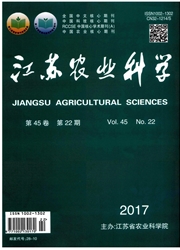

 中文摘要:
中文摘要:
针对植物木质部导管壁面增厚结构对流动阻力特性的影响问题,提出一种基于计算流体动力学(computational fluid dynamics,CFD)的植物导管流体建模方法。建立了导管内壁增厚结构的伯努利数学模型,分析导管内径、增厚纹宽、纹高、纹间距和倾斜角等几何结构与导管流阻系数之间的关系;基于剪切应力传输(shear stress transport,SST)k-ω湍流模型建立了螺纹与环纹导管流场仿真模型,对不同几何结构的增厚导管内部水分流动的流场进行了数值模拟。结果表明,导管内径,增厚纹间距和纹高等结构对流体阻力影响显著,增厚纹宽、倾斜角等结构的变化对流体阻力影响较小;壁面增厚结构对小导管的流动阻力影响更加明显,纹高为2.3μm时,在内径为16μm的导管中增厚结构产生的结构流阻占总流阻的57.0%,而内径50μm的导管中增厚结构流阻只占总流阻的27.2%;具有相同结构参数的环纹导管与螺纹导管的水分传输效率接近,且随着导管内径增大两者压降越来越接近(相差小于0.5%)。研究结果为深入研究植物导管水动力学传输特性提供理论依据。
 英文摘要:
英文摘要:
Water transportation in plants has been an important issue in plant physiology and ecophysiology. Limited by experimental conditions, the flow patterns of water through xylem vessels, especially through the vessels with wall thickenings, is not easily perceived, and it is critical to understand the water transportation through plants. The aim of this study was to investigate the hydrodynamic properties and the detailed flow patterns occurring in xylem vessels with annular(helical) thickenings in order to obtain a functional interpretation of these structures. For this purpose, the flow of water through xylem vessels with wall thickenings was studied by adopting a computational fluid dynamics(CFD) approach here. For the computation approach, the Bernoulli mathematical model of the annular vessel was established based on the energy conservation law. According to the obtained mathematical model, the geometrical structures of vessel, such as the inner diameter of vessel, the distance between the thickenings, the height of thickenings, the width of thickenings and the inclination of thickenings, were the main factors that affected the vessel flow resistance. Numerical calculations based on shear stress transport(SST) k-ω turbulence model were implemented to simulate the flow in xylem vessels with various wall thickening structures. In the simulation experiments, we studied and analyzed various aspects, such as influences of inner diameter, distances among thickenings, heights and widths of thickenings, and inclinations of thickenings to the flow resistance coefficient. The results showed that the fluid resistances depended largely on vessel diameters, distances among the thickenings, and heights of thickenings. When other parameters were initialized, with the increase of vessel inner diameter, the average flow raised, while the pressure drop and flow resistance coefficient decreased, for instance, the flow resistance coefficients ranged from 21050.1 to 811.9. With the increase of the distance among thicke
 同期刊论文项目
同期刊论文项目
 同项目期刊论文
同项目期刊论文
 期刊信息
期刊信息
